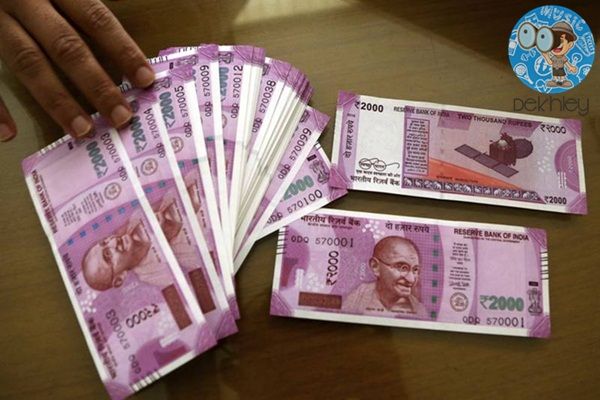The sudden withdrawal of all the old currency notes of Rs. 500 and Rs. 2000 to bring all the money kept in people’s household back into circulation changed the dynamics of the country. People are queuing outside banks across the country to replace old notes with the now substituted currency they are currently holding. Today, we will cover the most important things about the new Rs. 2000 note launched in the country.
Very Hard to be Forged
According to a number of sources, the new currency notes seem to be difficult to be forged because of the presence of colored strip security threads, latent images, and a variety of watermarks. A windowed security thread with the words ‘Bharat’ in Devnagari, 2000 and RBI are inscribed on these banknotes with a color shift when viewed in light. The color changes from green to blue when you tilt the note at an angle.
Presence of Mangalyaan on the Backside of the Note
In a bid to celebrate the Mars mission undertaken by India, the new notes will bear an image of the Mangalyaan to depict India’s first interplanetary space venture. Also, the tagline and logo of the ‘Swachh Bharat Abhiyan’ are present on the notes. You will also see a motif about the Mars Orbiter Mission on the backside of the note.
Pictorial Changes on the New Notes
A number of visual changes have taken shape on the new notes. The portrait of Mahatma Gandhi is now placed in the center. There would now be an Ashoka pillar to the right-hand side of Mahatma Gandhi and a number of electrotype watermarks.
Smaller in Size
It is very clear on the first viewing of the note that the new Rs. 2000, with the dimensions of 66mm*166mm, is smaller in length and width as compared to the old Rs. 1000 note. The note is available in magenta color.
Signatures and Clauses on the Note
The RBI Governor’s signature with promise clause, guarantee clause, and the RBI emblem are shifted to the right side in the new notes. The portrait and watermarks will appear next to the signature.
Silent Features for the Visually Impaired
The new banknotes are helpful to the visually impaired people as each note has seven bleed lines on the edges and has a rectangular shape for identification according to the RBI guidelines.




